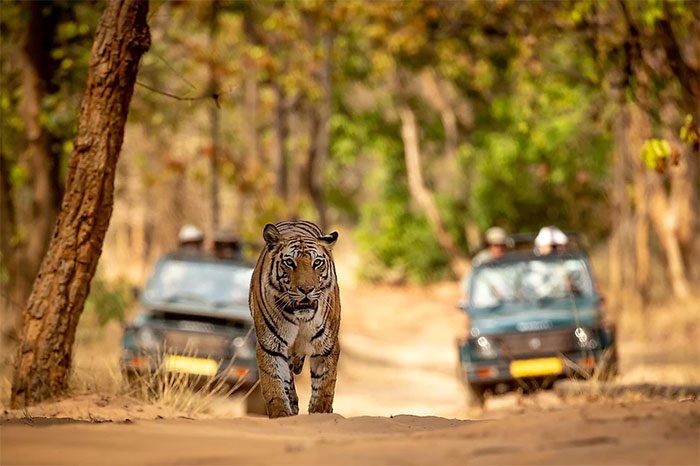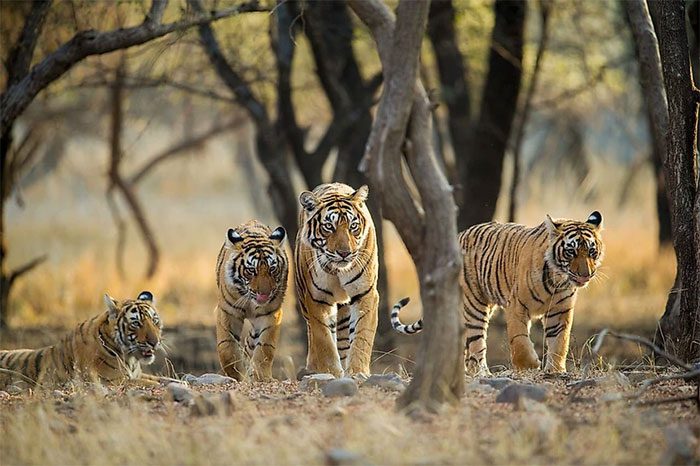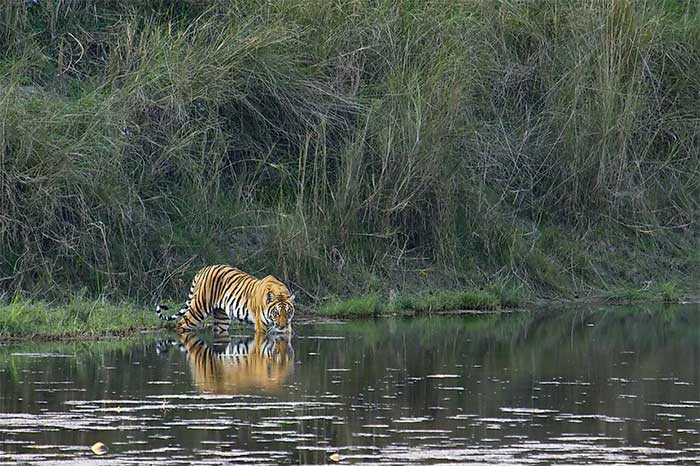Tigers around the world, as one of the most powerful and dominant land mammals, have always held an unparalleled allure.
In this ever-changing world, tigers are becoming increasingly rare, their habitats are being destroyed, and they are threatened by poaching. Amid this crisis, there is one country with an astonishing number of tigers.
This country is located on the Asian continent, has a long history and a rich cultural heritage, and serves as a symbol of the sacred power of the tiger.

According to the 2018 report on “The Status of Tigers, Prey, and Habitat in India” compiled by the National Tiger Conservation Authority, there are currently 2,967 tigers in India. This country is considered home to 75% of the world’s tiger population and the number of tigers has increased by 25% since 2014.
Tiger Species and Distribution: Tiger Species and Distribution in Different Countries
As the country with the largest number of tiger species, India is one of the most famous tourist destinations globally for tiger watching. The Bengal tiger is the species native to India and can weigh up to nearly 300 kg. They have a wide distribution range, including India, Bangladesh, Nepal, and Bhutan. The Bengal tiger is at risk of extinction due to habitat destruction and illegal hunting.
China is also a country with many important tiger species. Northeast China is home to the Siberian tiger. The Siberian tiger is one of the rarest tiger species in the world and is listed as endangered. Over the past few decades, the population of Siberian tigers has significantly decreased due to deforestation and illegal hunting. To protect this rare species, the Chinese government has implemented a series of measures, including establishing nature reserves and enhancing wildlife protection.
In South Asia, Sri Lanka is another habitat for tigers. Sri Lanka is the only country in the world that is home to the Sri Lankan subspecies of tiger. Although their numbers are relatively small, the Sri Lankan tiger is considered a national treasure of the country. The Sri Lankan tiger has a grayish coat and is smaller in size, often residing in the transition areas between forests and grasslands.

The country with the second largest number of tigers is Russia, with about 433 wild tigers, according to the latest national tiger census conducted in 2015. This number shows a slight increase compared to the previous survey conducted in 2005, which estimated the tiger population at around 360. A general population survey conducted by the Russian government with the support of WWF and the Amur Tiger Center indicates there are between 480 to 540 Siberian tigers within their current distribution range in the country.
The Russian Far East is also an essential habitat for tigers. The Siberian tiger is the most common tiger species in the region and is the largest wild cat in the world. Siberian tigers have lighter fur and larger sizes, weighing over 300 kg. However, the Siberian tiger is currently facing severe extinction threats due to poaching and habitat destruction.
In addition to the countries mentioned above, there are tigers in several countries such as Vietnam, Bangladesh, Nepal, and Bhutan. The tigers in these countries vary in species and distribution, but all face threats from human activities and habitat destruction. Therefore, to protect this vital tiger species, the international community needs to enhance conservation efforts, increase awareness campaigns for wildlife protection, and strengthen law enforcement to prohibit illegal hunting and trade.
Efforts and Achievements of Countries in Tiger Conservation
As the country that discovered the oldest known tiger fossils, China is considered the homeland of the tiger, and in recent years, the country has prioritized tiger protection. The Chinese government has intensified efforts to combat poaching and illegal trade through policies and regulations such as the Wildlife Protection Law. At the same time, China has actively promoted the protection and restoration of tiger habitats, restoring a large number of tiger habitats, and enhancing management and law enforcement in tiger reserves.
Moreover, China has also actively promoted cooperation with other countries to strengthen the protection and monitoring of tiger populations, creating a better environment for tiger reproduction and protection.

According to the latest estimates from the IUCN, Indonesia is the country with the third largest number of tigers in the world, with a population of 371 wild tigers. It should be noted that no systematic national survey has been conducted in Indonesia that can provide an accurate estimate of the tiger population in Sumatra – the only island in this country that still supports wild tigers.
India is home to one of the largest tiger populations in the world. The Indian government has developed a series of policies and measures to protect tigers, strengthening the crackdown on illegal poaching, enhancing management and protection of tiger reserves, and establishing numerous nature reserves and wildlife sanctuaries to ensure the safety of tigers. At the same time, India has also actively engaged in international cooperation and participated in the work of international tiger conservation organizations to jointly protect global tiger resources.
Russia is another country with important tiger species. The Russian government has invested significant resources to enhance the protection of tiger habitats, strengthen the crackdown on illegal poaching, and improve the monitoring and protection of tiger populations through scientific research and technical means. Russia has also actively cooperated with China and neighboring countries to promote tiger protection on a transnational scale and jointly protect tiger resources.
Many countries with tiger populations have strengthened cooperation and exchanges with international tiger conservation organizations, working together to develop and implement conservation plans, share conservation experiences and technologies, and enhance the crackdown on illegal trade and poaching. These collaborative efforts provide strong support for global tiger conservation initiatives.

The next country on this list is Nepal, which has a population of 355 wild tigers. This figure is based on the 4th national survey of tigers and prey conducted by the Department of Wildlife Conservation and National Parks, the Department of Forestry and Land Conservation, in coordination with the National Nature Conservation Fund and other NGOs.
However, despite the achievements made by these countries in tiger conservation, they still face many challenges. Issues such as frequent poaching and illegal trade persist, and tiger habitats continue to face ongoing destruction and shrinkage. Therefore, countries need to further strengthen their conservation efforts and adopt more robust policies, regulations, law enforcement, habitat restoration, and monitoring practices.
In addition, community involvement is also key to tiger conservation work, and efforts should be enhanced to promote social education to raise public awareness about conservation and encourage participation in tiger conservation.

According to a study conducted by the government-operated Wildlife Conservation Office, Thailand has about 148 to 149 wild tigers, the highest number of wild tigers in Southeast Asia. The increase in this wild tiger population is due to enhanced conservation measures implemented in recent years throughout the country. Some of these conservation measures include the installation of smart patrol systems and new cameras in strategic locations and improving habitats with the latest technology.



















































